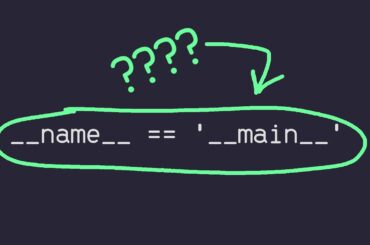The Even Groups problem is a common challenge that can help improve your Python programming skills by teaching you how to divide integers into groups as evenly as possible. This type of problem is beneficial because it involves basic arithmetic operations, logical thinking, and efficient use of built-in Python functions. In this article, we’ll walk through solving this problem step by step, showing how you can split an integer into smaller groups and handle remainders efficiently. By the end of this tutorial, you’ll have a solid grasp of the challenge and how to approach similar problems in Python.
Problem Overview
The challenge is to create a function called split_integer() that takes two integers as inputs—let’s call them number and parts. The task is to split the integer number into parts groups as evenly as possible. If the division isn’t perfect, the remaining value should be distributed across some of the groups.
For example:
- Splitting the number 7 into 3 parts should result in
[2, 2, 3]. The number 7 can’t be perfectly divided into 3 equal parts, so two parts get 2, and the remaining part gets an extra 1, making it 3. - Splitting the number 3 into 5 parts should result in
[0, 0, 1, 1, 1]. In this case, because 3 is less than 5, two parts will be 0, and the remaining three parts will each get 1. - Splitting the number 10 into 4 parts should result in
[2, 2, 3, 3]. The extra remainder gets distributed to two of the parts, making them slightly larger.
Now, let’s break down how to implement this in Python.
Defining the Function
To begin with, we’ll define our function split_integer() with two parameters: number and parts. These parameters represent the integer we want to split and the number of groups we want to split it into, respectively.
def split_integer(number, parts):
# Calculate the quotient and remainder
quotient, remainder = divmod(number, parts)
# Create the base parts list
base_parts = [quotient] * (parts - remainder)
# Create the extra parts list
extra_parts = [quotient + 1] * remainder
# Combine both lists
return base_parts + extra_partsExplanation of the Code
- Divmod Function:
We use Python’s built-indivmod()function, which is handy for this task. Thedivmod()function takes two arguments and returns a tuple containing the quotient and remainder when the first argument is divided by the second. For example,divmod(7, 3)would return(2, 1)because 7 divided by 3 is 2 with a remainder of 1.
quotient, remainder = divmod(number, parts)- Creating the Base Parts List:
We need to determine how many parts will get the base quotient value. This is done by subtracting the remainder from the total number of parts. For example, if we are dividing 7 into 3 parts and the remainder is 1, we have 2 parts that will simply get the quotient value.
base_parts = [quotient] * (parts - remainder)This line creates a list filled with the quotient value, repeated (parts - remainder) times.
- Creating the Extra Parts List:
The remainder determines how many parts need to be increased by 1. If we have a remainder of 1, then one part should get an extra 1 (i.e.,quotient + 1). We create a list of these extra parts by repeating[quotient + 1]forremaindertimes.
extra_parts = [quotient + 1] * remainder- Combining the Lists:
Finally, we concatenate the two lists—base_partsandextra_parts—to get the final result.
return base_parts + extra_partsExample Usage
Now, let’s test our function with some examples to ensure it works as expected.
# Test cases
print(split_integer(7, 3)) # Output: [2, 2, 3]
print(split_integer(3, 5)) # Output: [0, 0, 1, 1, 1]
print(split_integer(10, 4)) # Output: [2, 2, 3, 3]The function should produce the correct groupings based on the input values, handling cases where the division isn’t perfect by distributing the remainder among the groups.
Why This Solution Works
This solution is efficient because it minimizes the number of operations and uses built-in Python functions that are optimized for performance. The use of divmod() simplifies the process of dividing the integer into parts while handling the remainder in one step. Furthermore, by splitting the task into creating base parts and extra parts, the code becomes easy to understand and maintain.
Real-World Application
The logic behind this problem can be applied in real-world scenarios where you need to distribute resources evenly. For instance, imagine you are a project manager and need to distribute tasks among a team. If the number of tasks doesn’t perfectly divide by the number of team members, you’d want to distribute the remainder fairly. Similarly, this logic can be used in financial scenarios, such as splitting a budget across multiple departments or projects.
Expanding the Solution
While this function handles positive integers well, there are some potential edge cases and expansions that could be considered:
- Handling Zero or Negative Values:
What happens if thenumberorpartsparameter is zero or negative? You might want to add error handling to manage such cases. - Sorting the Output:
If the problem specifies that the groups need to be returned in a sorted order (ascending or descending), you could add a sorting step before returning the result. - More Complex Grouping:
This simple splitting logic works well for equal distribution, but in some real-world problems, you might need to consider weighted distributions where some groups should receive more than others based on certain criteria.
Handling Edge Cases
Let’s add a bit of error handling to make the function more robust. For example, what should the function do if parts is 0 or negative? We can add checks at the beginning of the function to ensure that the inputs are valid.
def split_integer(number, parts):
if parts <= 0:
raise ValueError("Number of parts must be greater than zero.")
if number < 0:
raise ValueError("Number must be non-negative.")
quotient, remainder = divmod(number, parts)
base_parts = [quotient] * (parts - remainder)
extra_parts = [quotient + 1] * remainder
return base_parts + extra_partsBy adding these checks, we prevent the function from running into errors with invalid inputs and provide clearer error messages to the user.
Conclusion
The “Even Groups” problem is a great way to practice your Python skills, particularly when it comes to handling division and remainders. Through the split_integer() function, we’ve learned how to distribute a number into groups as evenly as possible, using Python’s built-in divmod() function to make the task easier. By expanding and enhancing the transcript content, we’ve added depth and clarity to ensure that even beginners can follow along and understand the solution.
This problem also provides a foundation for tackling more complex distribution challenges you might encounter in real-world programming scenarios. So, keep practicing, and soon you’ll be solving even more intricate challenges with confidence!
Get LIFETIME ACCESS to “My Private Prompt Library”: https://bit.ly/MTSPromptsLibrary
Write 100% Human Content (Guaranteed Results): https://bit.ly/write-human
Looking for a custom GPT? Or SEO services for your website? Hire me on Fiverr: https://bit.ly/4bgdMGc


